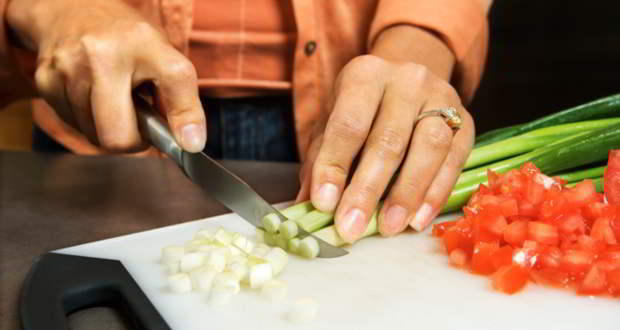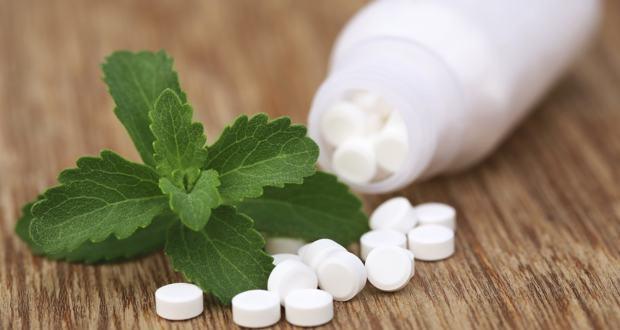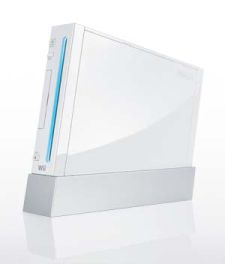How to Get Rid of Stretch Marks
Stretch marks can occur during sudden changes in body size, such as during pregnancy, puberty, or rapid weight-gain. Ninety percent of pregnant women will get stretch marks around their abdomen, hips and thighs, and unfortunately, they seem to be genetic — if your mom had stretch marks, odds are that you will too.[1]
Fear not, though. There are some things you can do to prevent stretch marks, as well as reducing the appearance of both new and old ones. Check out some of these options, listed from easiest to most difficult to execute.
Steps
Part 1 Verified Topical Options
-
1
Use a moisturizer. A study comparing herbal moisturizers found that people who lotioned-up daily showed significant improvement in skin appearance and elasticity [2]. Think of it this way: if your skin has a lot of stretching to do, it's less likely to tear and create stretch marks if it's hydrated.
- Use lotion on new stretch marks, or on areas where you're worried about getting them in the future. Though using lotion on old stretch marks may still improve their appearance, it's probably not as effective as using them on fresh ones.
- If you're worried about the chemicals in over-the-counter moisturizers, make your own out of equal parts wheat germ oil, olive oil and aloe vera. The same study showed that this combination created the best DIY moisturizer [3].
-
2
Use Retin-A. A study from the University of Michigan suggests that people who use Retin-A (or a retinoic acid cream) on new stretch marks saw huge improvements[4]. Retin-A is thought to boost collagen production, helping skin stretch out and avoid tears.
- Note that you should not use any products containing retinoic acid if you are pregnant or nursing. It can potentially cause birth defects in humans [5].
- Retin-A won't be as effective on old stretch marks.
- You'll probably need a prescription to get products such as Retin-A, Renova, Tazorac, and Differin (which all contain retinoic acid).
- Limit sun exposure of skin that you're treating with Retin-A. It could be more susceptible to burning.
-
3
Use glycolic acid. Glycolic acid used on stretch marks can increase collagen production, as making your skin more elastic overall[6]. As an alpha-hydroxy acid (AHA), it's in the same family of compounds often used in chemical skin peels.
- Glycolic acid is safe to put on your skin during pregnancy.
- Take extra care to keep skin that you're treating with glycolic acid out of the sun.
- Glycolic acid can be bought in over-the-counter. For a more intense treatment, you can get a stronger dose from a licensed dermatologist.
-
4
Combine glycolic acid and Retin-A. When used together, glycolic acid and Retin-A can dramatically improve the appearance of stretch marks [7]. If you choose to do this, you might want to "prep" your skin with Retin-A before using a glycolic acid [8].
- Do not use Retin-A if you are pregnant or breastfeeding. It can cause severe birth defects.[9].
- If you need to see a doctor for a Retin-A prescription anyway, ask how he or she would suggest incorporating glycolic acid.
-
5
Try Vitamin E oil. Vitamin E oil is often said to be the miracle cure for stretch marks, though one study shows that it's most effective on women who have already been pregnant before, and has not been effective in general use [10]. Still, it can't hurt in moderate doses.
- Try mixing your Vitamin E oil with a carrier lotion, such as a regular unscented moisturizer, for better coverage.
- 6 Egg Oil. Egg Oil if used regularly from the first trimester, can prevent pregnancy related stretch marks from appearing. Gently massage Egg Oil over the entire abdomen including sides and lower abdomen until the pubic area, twice a day starting from the 8th week of pregnancy until 6 months after delivery.
Part 2 Unverified Topical Options
-
1
Use essential oils. Though there hasn't yet been a peer-reviewed study on how essential oils can heal stretch marks, they are currently used as a home remedy. You can apply them directly onto the skin, or use a carrier (such as coconut oil or an unscented moisturizer) to make application easier. Here are some oils commonly promoted for stretch marks:
- Lavender
- Rose
- Frankincense
- Geranium
- Helichrysum
- Myrrh
Part 3 Supplemental Options
-
1
Increase your Vitamin C intake. One dermatologist suggests that 500 mg of Vitamin C, taken as an oral supplement, can help reduce the appearance of stretch marks[11].
- For even better results, try using a topical glycolic acid along with Vitamin C.
Part 4 Laser Treatment Options
-
1
For fresh stretch marks, use a pulsed dye laser (aka vascular laser). A pulsed dye laser set at 585-nm was shown to reduce stretch marks in post-partum Korean women [12]. This sort of treatment can take down the initial redness, and is best used on early marks (that have not yet turned silver).
- Be prepared to hand over a chunk of money for vascular laser treatments. Three to six sessions are required, priced around $450 each.
- Vascular laser treatments won't be effective for women with darker skin. Much like laser hair removal, the process works best when there's a large contrast between the target (in this case, the red stretch marks) and the pigment of the skin.
-
2
For older stretch marks, try a fractional laser treatment (aka laser resurfacing). For stretch marks that are no longer discolored but are still indented, you can use resurfacing with a "fractional" laser that focuses on small areas. The laser is aimed at the edges of stretch marks, smoothing over the surface of the skin [13].
- You could need up to three fractional laser treatments; each treatment could cost around $1000.
- Hyperpigmentation and scarring are potential side effects of fractional laser treatments.
Part 5 Surgical Options
-
1
Get an abdominoplasty (aka tummy tuck). The only certain way to get rid of stretch marks is to — you guessed it — cut them out. If you've tried everything else and can't stand the tiger stripes, a tummy tuck might be the ticket.
- Be prepared for the cost. In the United States, an abdominoplasty can run between $4000 and $20,000.
- Be aware of the risks. As with any major surgery, there are life-threatening complications that can arise from a tummy tuck.
- Plan on a long recovery. You can expect to take 2 to 4 weeks off work, and spend 3 to 6 months before you're fully healed.
- 2 Consider a "mommy makeover," or a combination deal. Some post-partum women get a tummy tuck, a breast lift, and liposuction all in one procedure.
Part 6 Knowing What Doesn't Work
- 1 Cocoa butter has not been proven to reduce stretch marks. In a double-blind study, cocoa butter was not shown to have any discernible effect on stretch marks [14]. Be wary of marketing schemes that claim otherwise.
- 2 Peptide-containing products also haven't been proven to work. "Repair" creams or serums that claim to contain peptides or proteins have not been proven to restore skin damaged by stretch marks [15].
-
Conjugated linoleic acid and loss
I was heartened by this story that has been running for a couple
-
Eat An Abundance Of Fresh Produce To Lose Weight Naturally
There are a lot of ways to lose weight. Find the techniques that
-
Learning These Simple Tips Can Put You On The Road To Weight Loss Success!
We bet you are tired of feeling terrible about yourself. Your weight
-
Weight Loss Tips for Women over 40
I know that weight loss tips for women over 40 is a very popular
-
4 Ayurvedic Tips For Weight Loss
A lot of people dealing with the pressures of urban living, struggle
-
How Can I Lose Weight For Christmas?
Christmas is just around the corner and I always have people ask
- DON'T MISS
- Top 10 Health Benefits Of Weight Loss
- Jennifer Hudson on Oprah
- Can’t Lose Weight? Follow These Great Tips!
- Tips For Setting Goals To Lose Weight
- 5 Best Workouts You Can Do in Front of Your Television
- Weight Loss Information For Those Who Want To Help Themselves
- Take The Extra Weight Off For Good
- Solid Advice For A Successful Weight Loss Plan
- 6 Weight Loss Tips For Your Honeymoon
- How Can I Get Rid of Belly Fat?




